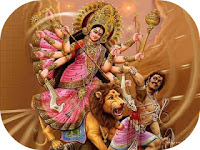When is Holi
This year Holi is on March 5 & 6, 2015. That is on Chaitra 21 & 22 of 2069 in Bikram Sambat Calender.
Holi is welcoming of spring and summer.
It is also observed to get blessing of God for coming harvests and
fertility of the land. This festival is celebrated in most of South
Asian counties.
Actually Holi is the night of Falgun
Krishna Chaturdasi but celebration starts from the very next day on
Purnima. Holi is the festival of color, friendships and love.
How we celebrate Holi
Holi in Nepal starts one week before the
main day of Holi. There is a tradition of erecting a long bamboo stick
(lingo) covered with pieces of different color cloths (Chir) in
Bashantapur Durbar square, Kathmandu. In the eve of Holi the lingo is
taken down and the Chir is burnt. The event is called Chir Haran or
Holika Dahan. Holi then starts.
Holi is celebrated with colors, water,
sweets and music. People put color on each other as a token of love.
People go houses of relatives and friends in group. Put colors on each
other eat sweets and move whole day. People dance and play music. People
in Terai celebrate Holi the next day from Kathmandu Valley and other
hilly reason of Nepal.
Actually, there was a tradition of
bringing Holi from places to places, so different places could have
different dates for Holi celebration in order in olden days. In some
part of India, this still holds true. Now, in Nepal there are only two
days celebrations.
People used to make Pichkari (water
guns) out of bamboo. And throw colored water on each other. Now-a-days
balloons and plastic water guns (pichkari) are used. The balloon filled
with water is called Lola in Nepali. Kids start throwing lolas on each
other from week ahead of main Holi days.
People collects wood and burn fires and play music and performs dances. Some drink bhang and go crazy and make jokes.
The burning of the wood log in village
and town avenues are very important part of Holi celebration. This event
is called Holika Dahan, the end of Holika.
Holi is official holiday in Nepal.
Offices are closed on Fagun Purnima days in hilly reason to celebrate
Holi and the very next day, Terai is off for the celebration.
Stories behind Holi
There are varies stories behind the Holi celebration.
Lord Krishna and Radha
Lord Krishna was repeatedly complaining
his mother Asodha that all his girl friends were teasing him saying
Black One (Kale). And ask her, “why was he dark when his all of his
girl-friends (Gopinis including Radha) were fair?”
Yashodha gave Krishna different colors
and asked him to throw it on Gopinis’ faces so they would look dark too.
Krishna took colors and threw it on Gopinis. Gopinies were in love with
Krishna so they loved color game and enjoyed it. From that time Holi
has been celebrated.
Death of Holika
It is said Holi is the day when Holika is died. It is celebration of her death.
Praladh was son of Hiranyakasyapu, a
demon who started thinking he was only the Lord in this Universe.
Praladh became devotee of Lord Vishnu, while Hiranyakashyapu wanted all
to worship him only. Hiranyakashyapu wanted to convience his son with
various tries, but failed. Praladh never stopped worshipping Lord
Vishnu.
Hiranyakasyapu then planned to kill his
five year old son. He ordered his sister Holika to kill Praladh. Holika
was blessed with a fire proof dress. She went to flame with carrying
Praladh. However, due to devotion of Praladh Lord Krishna burnt Holika
and safely rescued Praladh.
Holika Dahan, means the end of Holika became Holi. People
celebrated the end of Holika with colors, so the festival Holika Dahan
became later Holi.
There is tradition of making Hay Holika and burn it on the Holi.
Krishna and Draupadi
It is said Holi is celebrate to remember the love to Krishna to
Draupadi when he protected her when the Kaurav did her Chir Haran.
Kauravs were pulling her Sari. Lord Krihna made the sari endless. Lord
Krishna saved Draupadi and this day is celebrated as Holi.

















